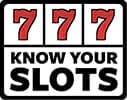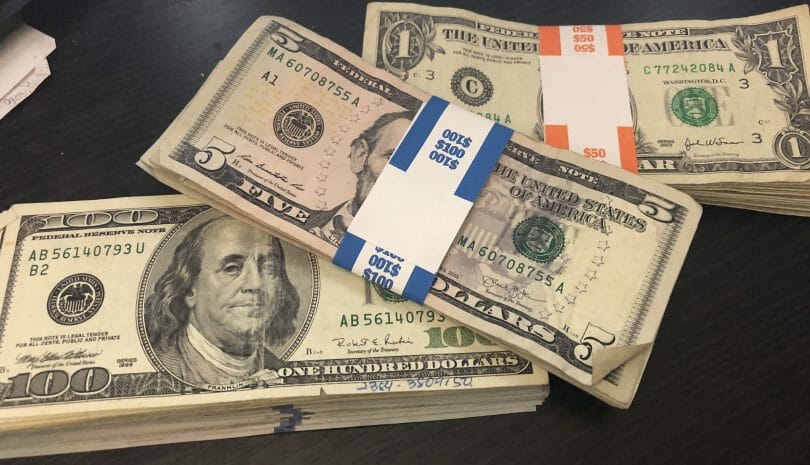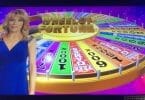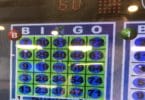In a recent post, I talked about Risk of Ruin and making sure you’re not under-bankrolled. Reader Katherine commented on the post about a popular money management device, the Winners Bank:
Do you know about the Winners’ Bank? I learned of it from Neily777 and it’s one of the ways he makes sure he goes home with money. The idea is to steadily put bills, even $5’s, in the locked bank. If you are on a day trip, you leave the key at home
Know Your Slots reader Katherine
Before we dive in to the Winners Bank itself, let’s talk about another aspect of bankroll management, which revolves around pacing, as well as big wins.
When You’re Losing
Whether your trip is one day or multiple days, bankroll pacing is an important aspect of bankroll management. What this means is making sure you’re not over or under betting based on the amount you have now, and how long you wish to play. We discussed avoiding being underbankrolled in that previous post, but even when you get to the casino, the ebbs and flows can dictate whether you need to adjust your approach.
Sometimes, for instance, things don’t swing your way. In a recent trip to the casino where I was at a local with a $200 bankroll, six consecutive $20s in a series of slot machines evaporated nearly instantly. That’s more than half my bankroll, gone in a 15-minute swing. Given my hope had been to be there and play for a couple of hours, that wouldn’t do.
Some people will go into full tilt mode, up their bet hoping to swing for the fences and try to win that money back quickly. I usually take a few to calm nerves, and adjust my betting a bit to lower the minimum bet. In the case of those six $20s, I was playing games with a bet between 50 cents and 88 cents a spin. So I moved to games with lower bets (25-40 cents) for a bit, hit a couple of bonuses that built up a bit more bankroll, and returned to my original betting strategy.
Why did I lower my bet? Doesn’t that reduce my chances of winning big? Sure. But remember my goal – I planned to be there for a couple of hours and didn’t want to wipe out of my bankroll in an hour. So adjusting my bet allowed me to get the amount of entertainment I had hoped out of my budget. And, because I didn’t start spending recklessly, I still went home with a portion of my bankroll when I was done.
When You’re Winning
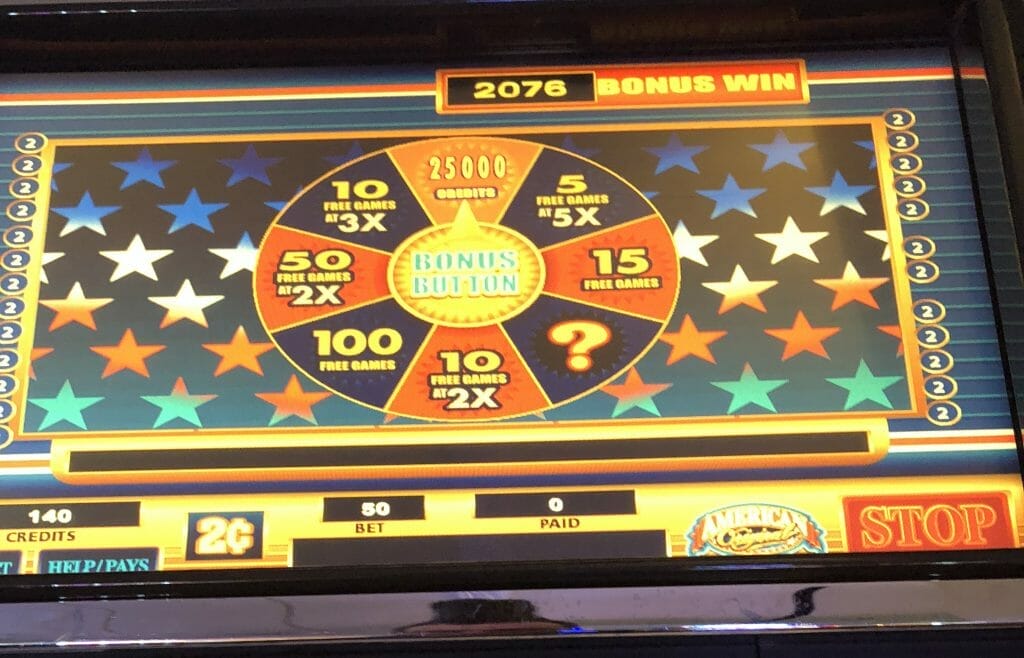
Some trips you can do no wrong. Another day trip, with a similar budget, I had winning sessions on no less than 9 machines in a row. By the time I got off the ninth machine, I was more than $900 up. Given my bankroll was $200, I knew I was going home with money.
In situations like this, I will generally pretend like the winnings never happened, and start over with my original bankroll. If I’m really up, like in this situation, I may give myself a little more. I decided that I would either leave $1000 up, or $700 up, or when I was done. Ultimately I played another hour, was still about $800 up, and opted to leave.
In a more subtle example, I visited a local that offered me $125 in freeplay about a week before this was posted. I also had my normal local budget of about $200. I never actually tapped in to that budget; before the freeplay cash had evaporated I started catching fire, getting a lot of bonuses including a 200x bonus win on a Konami Money Galaxy machine. Around two hours in I decided I would not be tapping the $200 and playing just on the freeplay, and after four hours still walked with $70 of the freeplay.
In both cases, I evaluated my position, and decided to work from a position that certain money was untouchable. That would ensure I would walk out of the casino with at least some of the money I came with. On days where I’m up, like that epic day, it can help me lock in winnings.
Multi-Day Bankroll Management
When you’re going on a longer trip, like to Vegas, the rules can change a bit. My first couple of trips to Vegas, I had my entire bankroll on my person at all times, and it meant wild swings that would become increasingly hard to work my way out of when the money was inevitably going downhill during the course of the trip.
On my third visit, I decided to divide my bankroll into halves. But on day three after a pretty bad run at craps I went on tilt, and allowed myself to tap into the second half (which shouldn’t have been touched until day five). Fortunately for me I had a strong rebound that got me back on track, but that could’ve been curtains for my gambling budget for that trip if that hadn’t worked out.
By trip 4 (which was 8 days), I implemented my current system of dividing the budget into quarters. I was allowed to carry the first two days on me and on day three, add the second quarter, or two more days (and usually if I have money from the first two days left over, it goes into the safe to go home with me).
I had a scenario on one trip where on my very first night I hit a handpay. Knowing these trips were a marathon and not a sprint, I decided not to expect to go home with that handpay, and allowed myself to play a bit more liberally. By day four of eight, I was still a bit ahead of my original bankroll. Since half the trip was over, I earmarked a portion of the bankroll was now untouchable. I did the same thing at day six when I was still trending ahead of expectation. I ultimately went home with about half my bankroll, which I considered a significant victory given how long I was out there. The next year, practicing similar rules, I again went home with half my bankroll.
Barring a brutal trip, I expect I won’t zero out going forward because of the guardrails I’ve put around my budget.
In all these scenarios, when I was trending ahead, I turned some money off limits. I still had at least the amount of money I had originally budgeted for myself, and I would sometimes give myself a bit more, but the rest would go home with me. That made sure even if it was a losing trip, I didn’t give it all to the casinos.
My technique was to leave future days’ money, and money “off limits” for the remainder of the trip, in the hotel safe whenever available. This meant that when I was walking around Vegas or a casino, and wanted to make sure the money wasn’t easily accessible, I had to think about my decision on the walk back to the hotel room. Many times when you’re on tilt, even a few minutes to walk around and cool off can help talk yourself out of a bad decision.
When Discipline Isn’t Enough
That brings us to the Winners Bank. It’s easy in a gambling situation to make a decision at moment A, and keep pushing through that decision a few minutes later. Winning $500 on a slot machine, one might say I’ll play $100 of it and 20 minutes later find half of it gone instead.
Winners Bank offers a way for players who sometimes can’t control those impulses to force their own hand by putting money into a locked device that you have to unlock to get the money. It’s recommended to leave the key at home, in the casino safe, somewhere where you have to think twice about accessing it, just like my safe storage method above. For some, the Winners Bank makes it easy to decide to take money home, and from that moment it’s off limits.
For those with larger gambling budgets, you may need more than one of these devices – they’re small but designed to be so to make it easier to carry around – but for those who find themselves bringing home more money because of them, it’s going to pay for itself many times over.
Watch and Learn
Here’s a video Katherine recommended from Neily777 that discusses bankroll management, and the Winners Bank:
